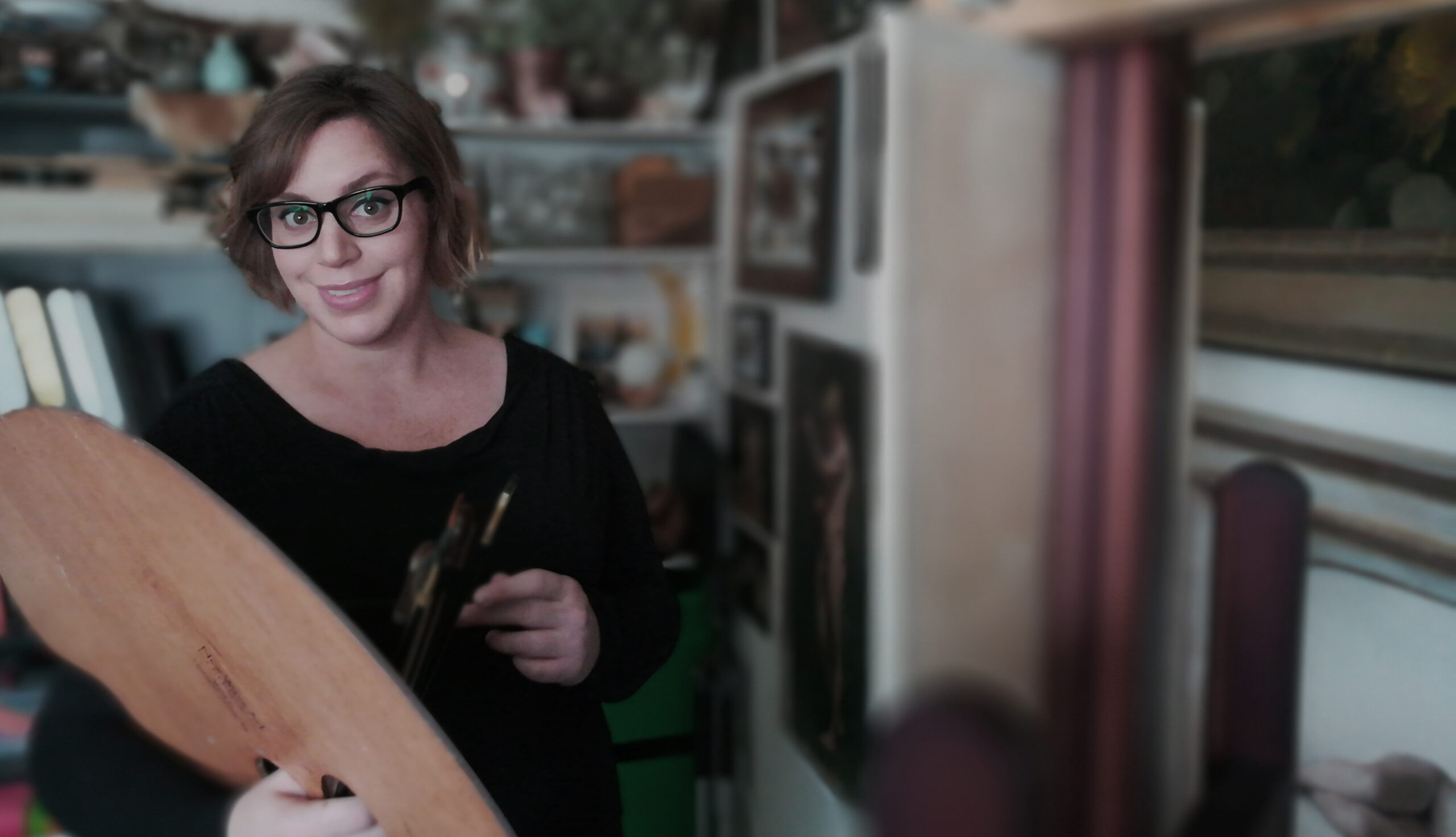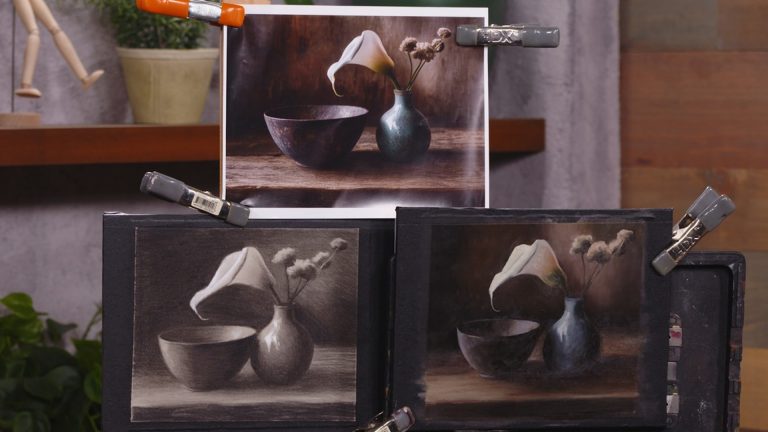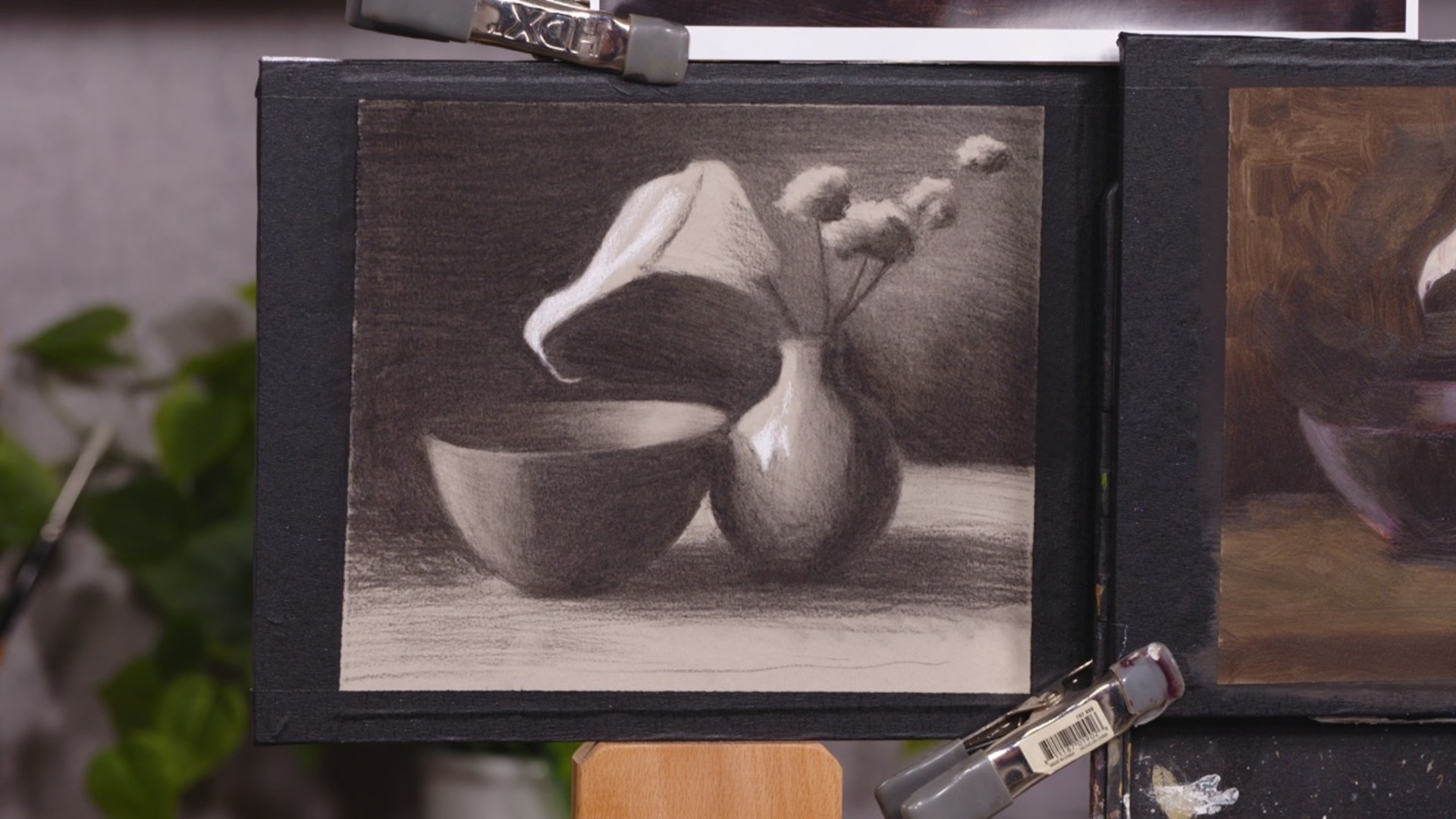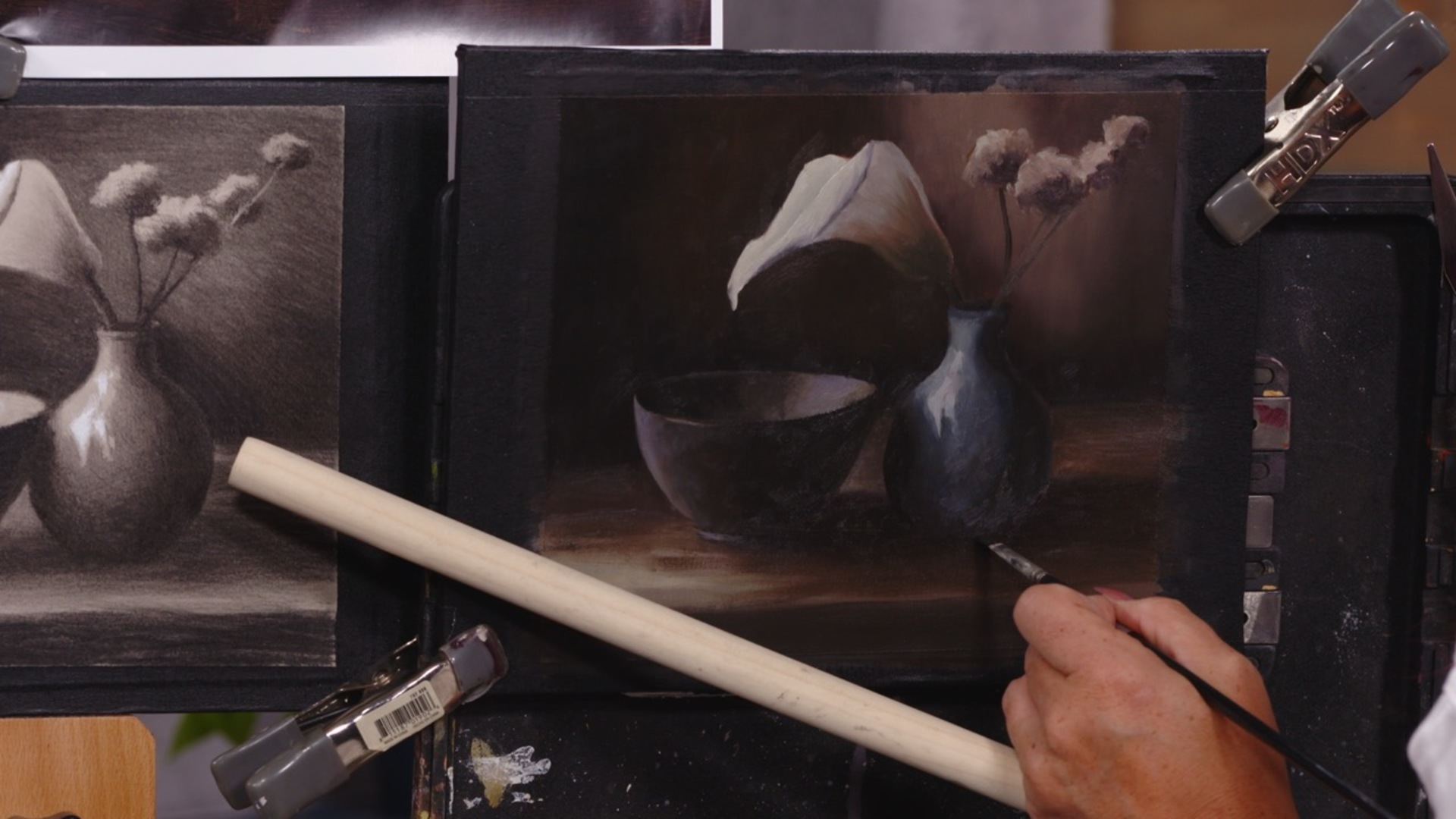
From Charcoal to Canvas: Training the Painter’s Eye
Katie Liddiard
- In-depth Instruction; over 255 mins
- On-demand video access anytime
- Bonus downloadable PDF resources
- Access to class Q&A






What if you could take the clarity and confidence you build in a charcoal drawing and carry it seamlessly into a rich, fully realized oil painting? In From Charcoal to Canvas, artist Katie Liddiard guides you through that process step-by-step, showing how skills in one medium directly strengthen the other.
The class begins with establishing a strong foundational stage. Working first in charcoal, Katie demonstrates how to quickly capture essential shapes, values, and relationships, focusing on accuracy without getting lost in details. You’ll see how simplifying forms and understanding light and shadow early on sets you up for success in both drawing and painting.
Next, you’ll move into the impression stage. Here, Katie expands on the information from the foundation stage, refining shapes and expanding values with charcoal and paint. You’ll learn to balance accuracy with painterly freedom, keeping the work fresh while developing structure, depth, and atmosphere.
Finally, in the finishing touches stage, Katie works on the charcoal and oil painting side-by-side, revealing how to assess your work critically and make deliberate choices. You’ll explore edge control, subtle temperature shifts, pops of saturation, and precise value adjustments to bring volume, light, and life to your subject—without overworking it.
Throughout the class, Katie emphasizes the importance of thinking like an artist at every step: responding to the needs of the piece rather than rigidly copying a reference. By working in both charcoal and oil, you’ll strengthen your eye, improve your value control, and gain tools to create finished works that feel intentional and alive. You’ll be able to see the differences and similarities of the two mediums and why charcoal is a great medium to pick up to make your paintings more successful.
Whether you’re new to still life or looking to sharpen your finishing skills, From Charcoal to Canvas gives you a clear, repeatable process for creating artwork that shines from first mark to final stroke.
Katie Liddiard
Katie J. Liddiard was born in Logan, Utah in 1984. She attended Snow College in Ephraim, Utah and afterward attended the Florence Academy of Art in Florence, Italy. When the Masters Academy of Art opened up closer to her home in Springville, Utah she finished her studies there. Upon graduating she became the Assistant Director of the Masters Academy where she guided students to become self-sustaining artists. After having served in that capacity for several years, she decided to focus on her own work and now paints in her home studio in Spanish Fork, Utah.

Bonus materials available after purchase
